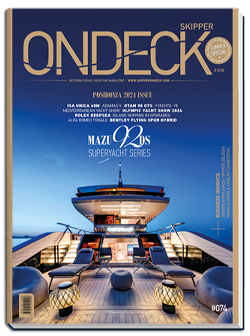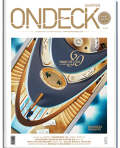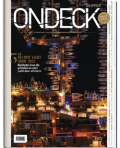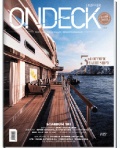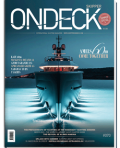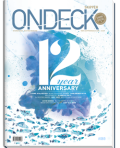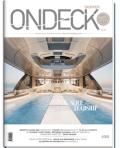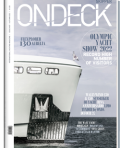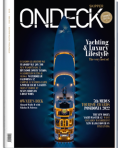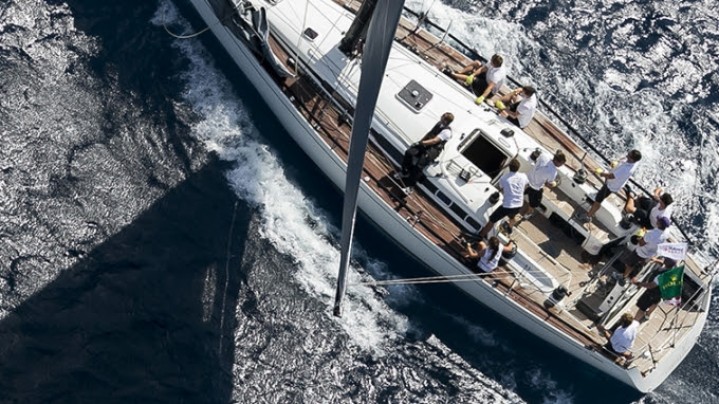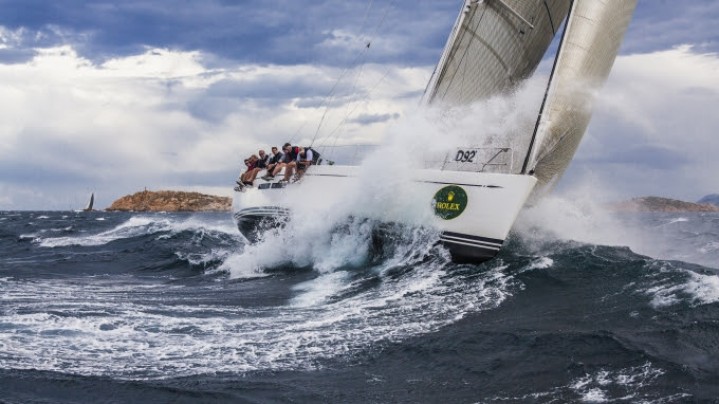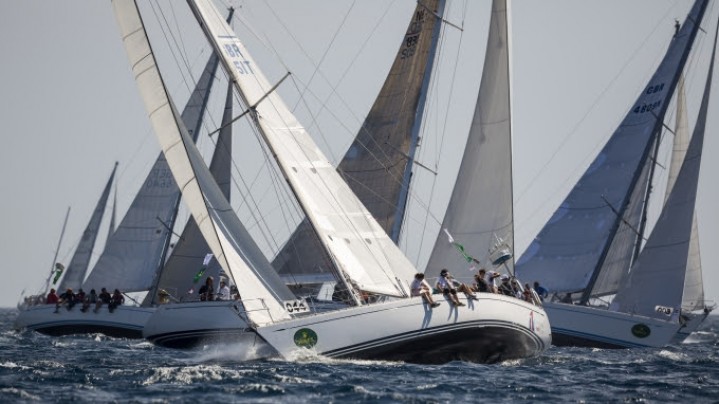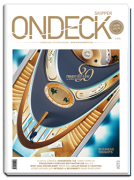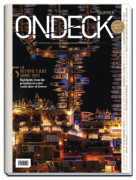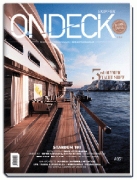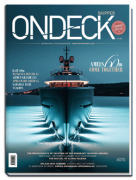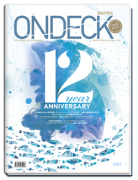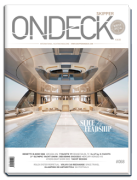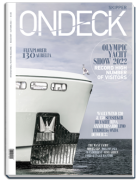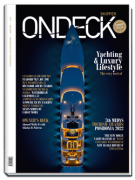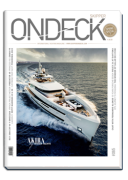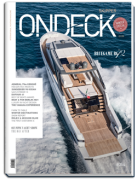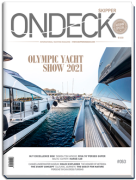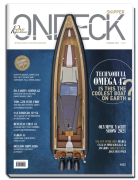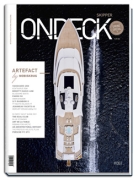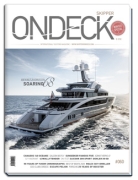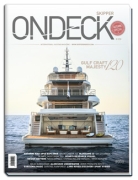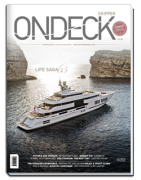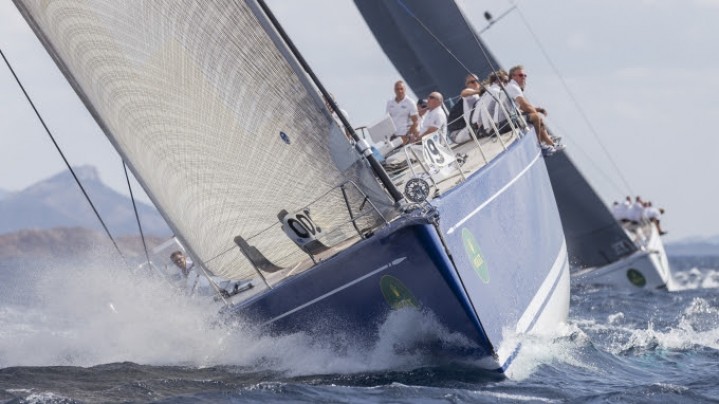
Mention the Rolex Swan Cup to any sailor and the feelings evoked are common – great competition in an enviable environment, a prevailing spirit of fair play and an opportunity to sail yachts renowned for their grace, enduring appeal and rich heritage.
“The event embodies several values, especially those that come with the pleasure of owning a Swan,” explains Leonardo Ferragamo, Chairman of Nautor’s Swan and a long-time Swan owner and sailor. “A Swan owner is a person who truly loves their boat and is full of pride, dedicating time and energy to their yacht. Swan owners have real passion and a noble approach which are characterized by the racing and the competitive spirit that shines through at the Rolex Swan Cup.”
Fact: The Rolex Swan Cup was first held in 1980. A biennial event, this year marks the 19th edition.
A SPORTING RELATIONSHIP
At the previous edition of the Rolex Swan Cup in 2014, Rolex, Nautor’s Swan and organizers the Yacht Club Costa Smeralda celebrated the 30th anniversary of their partnership. It is one of the sporting world’s longest lasting and successful relationships. Elegance, precision, innovation, a respect for tradition and excellence unite all of the event’s partners. “The Rolex Swan Cup is one of the iconic regattas in the world. It is rewarding to see how it continues to build and consolidate event after event,” continues Ferragamo.
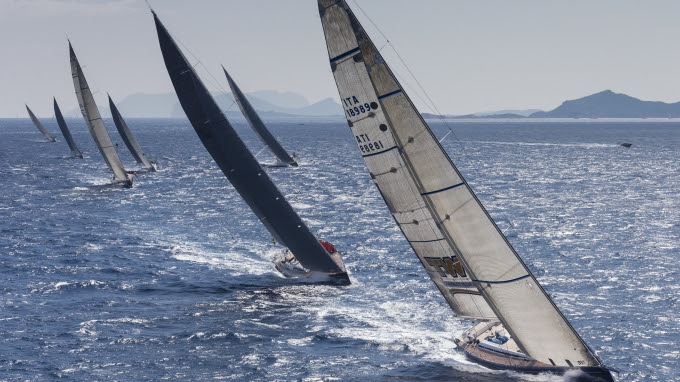
Fact: 93 yachts from 21 countries took part in the last edition of the Rolex Swan Cup.
PARTNERS IN APPROACH
There are no other similar partnerships in the sport of yachting that can claim either the longevity or the symbiosis that characterizes the relationship between Rolex and Nautor’s Swan. Swan yachts are designed to perform in the most rugged of marine environments. So too is the Rolex Oyster. Rolex timepieces are regarded as enduring design statements; the same is true of Swan yachts. Both companies pay close attention to the smallest detail to ensure perfection in their finished product.
Fact: The partnership between Rolex and Nautor’s Swan is more than sponsorship, it is a bond between like minds.
GOLDEN ANNIVERSARY
The year 2016 marks the 50th anniversary of the launch of the first Swan. When he founded Nautor’s Swan in 1966 in Pietarsaari, Finland, a small town noted for its harsh winters, Pekka Koskenkylä was motivated by his ambition to build high-quality, high-performance sailing yachts anchored in hundreds of years of Finnish boatbuilding history. Since then, Nautor’s Swan has produced more than a hundred different models of Swans, from the first design that measured some 11 metres (36-ft) all the way through to 39.9m (131-ft). Few, if any, boat builders have been at the forefront of their industry for such a long time, which makes Swan yachts a true benchmark. All Swans carry the emblematic and unmistakable ‘arrow’ – indented in every hull – a sign so iconic that the brand name is not needed to identify the yacht afloat.
Fact: The 2016 edition of the Rolex Swan Cup will welcome prominent new Swan designs including the Swan 115, Swan 54 and the recently launched ClubSwan 50 class.
PERFORMANCE AND LONGEVITY
The first Swan built was the 36-ft Tarantella. That she, and several other Classic designs, are among the entrants for the 2016 Rolex Swan Cup, is proof of their endurance, reliability and how lovingly they have been maintained. When Tarantella was built she introduced a number of genuine innovations for her time, several of which were aimed at improving steering stability, including positioning the rudder fully aft, separating it from the full length of the keel and thickening the aft section of the keel. The Swan 36 proved equal to more traditional wooden boats in general handling and safety, but outshone them with better performance under sail and improved living space.
Fact: Sayula II, a Swan 65, was the first winner of the Whitbread Round the World Race in 1973/74.
LEGENDARY DESIGNERS
Tarantella was drawn by the first Swan designer – the New York studio, Sparkman & Stephens. Prior to this, nobody had built a boat over ten metres long in fibreglass. The material was then still new to yacht building, but would dominate the mass production of boats in years to come.
New Zealander Ron Holland took over the design reigns from 1978 to 1981 before the Frers family, headed by the now legendary German Frers Snr, began its long dynasty. They have been responsible for most creations ever since and, like a Swan owner, are extremely attached to their craft while managing to remain truly impartial. “They are like your children – you don’t say which is your favourite!,” reveals German Frers Snr.
Fact: Between 1966 and 1978, Sparkman & Stephens was responsible for almost all of the first 1,000 Swans built.
FIVE COMPETITIVE CLASSES
The five classes of Swan yacht set to compete at the Rolex Swan Cup in Porto Cervo this year are: Maxi (18.29 metres and above), Grand Prix (18.28m and below), Classics (designs by Sparkman and Stephens), ClubSwan 42 and Swan 45. The latter, the Swan 45 One Design class, will compete in its own World Championship. Winners of all categories will be awarded a coveted Rolex timepiece at the final prizegiving held at the YCCS.
The competition comprises five days of racing in northeast Sardinia’s emerald waters and rocky outcrops, including the popular Long Islands Race around the Maddalena archipelago, and a host of social events designed to bring the Swan world together.
“The atmosphere is friendly and sporting; people like being here together, racing their boats and sharing their experiences,” explains Ferragamo. This passion for yachting and the event’s Corinthian spirit are sentiments embraced wholeheartedly by Rolex.
Fact: The defending Rolex Swan Cup Class champions are Nikata, GBR (Maxi); Yasha, JPN (Swan Grand Prix); Finola, GBR (Classics); Natalia, ROU (ClubSwan 42) and Earlybird, GER (Swan 45).











